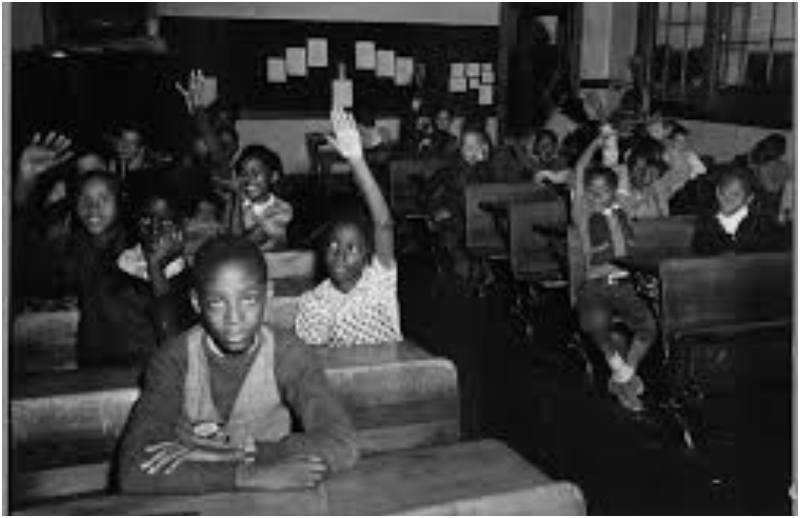Introduction
Brown v. Board of Education (1954) is one of the most significant cases in the history of U.S. constitutional law. This landmark decision by the U.S. Supreme Court overturned the doctrine of “separate but equal” that had been established in Plessy v. Ferguson (1896) and marked a pivotal moment in the civil rights movement.
The case addressed the legality of racial segregation in public schools, specifically challenging the idea that segregated educational facilities could be considered equal. The ruling fundamentally reshaped U.S. law by declaring that racial segregation in public schools violated the Equal Protection Clause of the 14th Amendment of the U.S. Constitution.
Background of the Case
The case stemmed from five separate cases all challenging the same central issue: racial segregation in public schools. These cases were consolidated under Brown v. Board of Education, which ultimately became the title case. The plaintiffs in these cases were African American children who were denied admission to certain public schools because of their race. The plaintiffs argued that the segregation policies resulted in inferior educational opportunities for African American children, thus violating the equal protection guaranteed by the 14th Amendment.
The plaintiffs included:
- Oliver Brown, a parent from Topeka, Kansas, whose daughter, Linda Brown, was denied entry to a white school in her neighborhood.
- The plaintiffs from Clarendon County, South Carolina, where the school district denied African American children the opportunity to attend a nearby white school.
- The plaintiffs from New Castle County, Delaware, and the other cases from Virginia and the District of Columbia, which involved similarly discriminatory school systems.
The case was brought before the Supreme Court after years of litigation and lower court rulings that upheld the constitutionality of segregation based on the Plessy decision. In Plessy, the Court had ruled that racial segregation was constitutional as long as the facilities for both races were “separate but equal.” However, it was clear that the facilities for African Americans were far from equal.
Legal Issues
The main legal issue in Brown v. Board of Education was whether the doctrine of “separate but equal” was compatible with the Equal Protection Clause of the 14th Amendment. The 14th Amendment, ratified in 1868, states: “No state shall… deny to any person within its jurisdiction the equal protection of the laws.”
At the core of the case was the argument that the segregation of public schools was inherently unequal because it stigmatized African American children as inferior to white children. This, the plaintiffs argued, violated the Equal Protection Clause of the 14th Amendment by depriving them of equal educational opportunities.
The plaintiffs presented expert testimony in the form of psychological studies that showed the damaging effects of segregation on African American children. One of the key pieces of evidence was the Doll Test, a study by psychologists Kenneth and Mamie Clark, which showed that segregation led African American children to internalize feelings of inferiority. The study suggested that segregated schooling resulted in harmful psychological effects on African American children, which contributed to a sense of racial inferiority.
The Court’s Ruling
The U.S. Supreme Court, under Chief Justice Earl Warren, issued a unanimous ruling in favor of the plaintiffs. The Court held that “separate educational facilities are inherently unequal,” thus overturning the Plessy v. Ferguson decision as it applied to public education. In the Court’s opinion, Justice Warren wrote:
“We come then to the question presented: Does segregation of children in public schools solely on the basis of race, even though the physical facilities and other services may be equal, deprive the children of the minority group of equal educational opportunities? We believe that it does.”
This decision was based on the understanding that racial segregation generated a sense of inferiority among African American children that undermined their educational opportunities. The Court recognized that even if schools were physically equal, the psychological harm caused by segregation made it impossible for them to truly offer equal educational opportunities.
Impact on Civil Rights and the Legal System
The Brown v. Board of Education decision had far-reaching consequences. It was a major victory for the civil rights movement and set the stage for further legal challenges to racial segregation and discrimination. The ruling was a catalyst for the desegregation of public schools and other institutions throughout the United States. While the ruling did not immediately result in the desegregation of all public schools—many Southern states resisted compliance—it established a legal precedent for challenging racial segregation.
One of the immediate impacts was the increased push for desegregation of public schools. In the years following the ruling, the federal government took a more active role in enforcing the desegregation of schools. The Civil Rights Act of 1964 and the Elementary and Secondary Education Act of 1965 provided further legal tools to support integration efforts.
Moreover, the Brown decision influenced other areas of law related to civil rights. It contributed to the development of legal theories that were later used in subsequent cases involving racial discrimination and segregation in other public services, housing, and transportation. The ruling also inspired a generation of lawyers and activists to challenge other discriminatory laws, leading to significant advancements in civil rights legislation in the 1960s and 1970s.
Challenges and Resistance
Despite the Court’s decision, many Southern states and local governments actively resisted desegregation for years. In some cases, state and local governments created “freedom of choice” plans, which were designed to delay full desegregation by allowing white children to continue attending segregated schools. In some instances, state legislatures passed laws to explicitly defy federal desegregation orders.
In response to these challenges, the federal government, under Presidents Dwight D. Eisenhower and Lyndon B. Johnson, took steps to enforce the decision. Eisenhower sent federal troops to Little Rock, Arkansas, in 1957 to ensure that nine African American students, known as the Little Rock Nine, could attend a previously all-white high school. The Civil Rights Act of 1964 and other legislation were instrumental in furthering the cause of racial equality and helping ensure that the principles established in Brown were implemented more broadly.
Legacy
Brown v. Board of Education continues to serve as a cornerstone of civil rights law. The case marked the beginning of the end of the legal foundation for racial segregation in the United States. Its significance extends beyond education and continues to influence debates on racial equality, civil rights, and constitutional protections for all individuals, regardless of race.
The case is frequently cited in legal arguments concerning equality, due process, and the constitutionality of discriminatory laws. It remains a powerful symbol of the fight for justice and equal treatment under the law.
Conclusion
Brown v. Board of Education was not just a pivotal legal decision, but a defining moment in U.S. history that reshaped the landscape of civil rights law. It challenged deeply entrenched racial segregation and set the stage for further legal reforms aimed at dismantling institutionalized racism. The case highlighted the importance of the Equal Protection Clause of the 14th Amendment and demonstrated the significant role the judiciary can play in advancing civil rights.
The case’s impact is still felt today, as the fight for racial equality continues to evolve in the courts and beyond.

